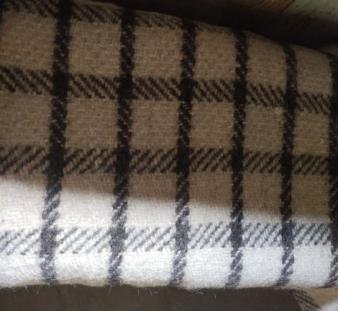EE00002058
 Asanee: Wool Mat
Asanee: Wool Mat
Asanee is a wool mat made from sheep wool in its natural colour. The wool is either black or white in colour. The name has come into existence from the honorific term of Lhotshampa (Southern Bhutanese) dialect Asaan, Garaan, Garnus which means please sit down. Therefore, Asaan is a respectful term for sit and nee is a mat for sitting and Asanee is a sitting mat. The patterns are made depending on the availability of the colour of the wool. The most common pattern of the element is white background with black checks and at times the white background is bigger than the black checks. It is determined by the demand of the customers and the availability of the wool. It is rectangular in shape and used as cushion covers for diwan and sofas as well as sitting mat.
The origin of the element has begun in the community of sheep bearers. The wool mat saw its existence when the economy of the community was at its minimal where they wove various products from wool for the exchange of clothes and other basic necessities of life. The community bartered the wool mat and wool blanket called Raree for basic needs like kitchen stuff and clothing. However, all the sheep rearing community did not weave the element and also they did not have the right to own and weave by certain community. The weaving of wool mat spread to those women who were interested to learn to supplement the economic status of the family. According to informant (Dil Maya Gurung), the culture of weaving Asanee had come from parts of Sikkim, However, not very sure to state the origin clearly.
Knowledge of weaving Asanee has deteriorated due to the change in the life style of people as it messes up the room due to the split of the wool being carried out every corner of the house in the process of brushing, combing and spinning the wool. And the women of the day do not take interest in weaving due to long hectic yarning process. While working, the wool gets tangled with the clothes which makes untidy. More so, with the rapid economic development and changed in life styles under the dynamic leadership of our great monarchs, the sheep rearing has extinct and weaving of the element must have pass down to younger generations if the sheep rearing practice is there in Tsendagang community. The other reasons for not taking the weaving of element on board is the opening of doors to education where everyone has obtained education and decent jobs. Though weaving of Asaanee culture is not so vibrant as of today but every household have the mat which they usually use it when honourable guests visit their house.
Bhutan


